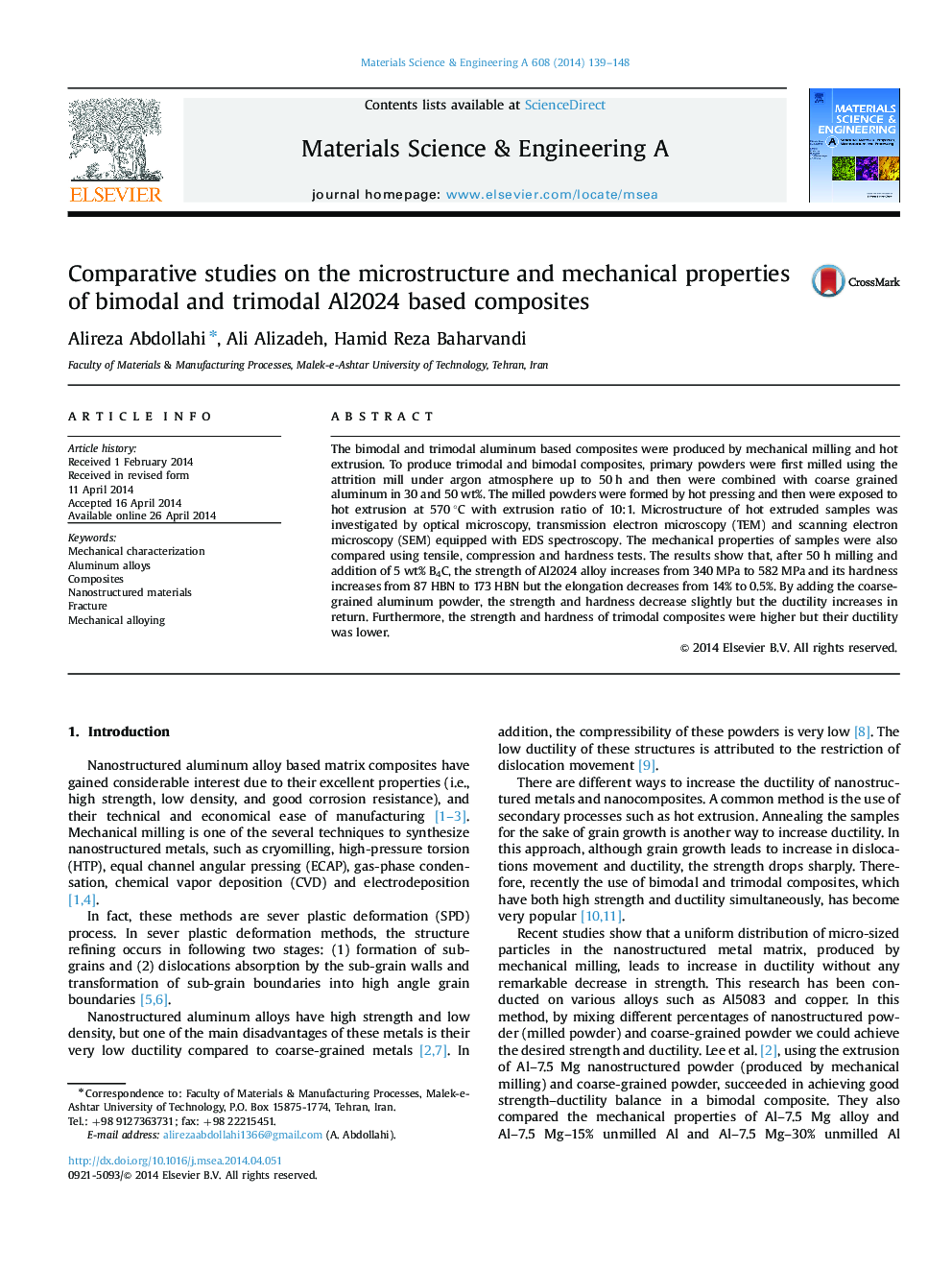| Article ID | Journal | Published Year | Pages | File Type |
|---|---|---|---|---|
| 1575101 | Materials Science and Engineering: A | 2014 | 10 Pages |
Abstract
The bimodal and trimodal aluminum based composites were produced by mechanical milling and hot extrusion. To produce trimodal and bimodal composites, primary powders were first milled using the attrition mill under argon atmosphere up to 50 h and then were combined with coarse grained aluminum in 30 and 50 wt%. The milled powders were formed by hot pressing and then were exposed to hot extrusion at 570 °C with extrusion ratio of 10:1. Microstructure of hot extruded samples was investigated by optical microscopy, transmission electron microscopy (TEM) and scanning electron microscopy (SEM) equipped with EDS spectroscopy. The mechanical properties of samples were also compared using tensile, compression and hardness tests. The results show that, after 50 h milling and addition of 5 wt% B4C, the strength of Al2024 alloy increases from 340 MPa to 582 MPa and its hardness increases from 87 HBN to 173 HBN but the elongation decreases from 14% to 0.5%. By adding the coarse-grained aluminum powder, the strength and hardness decrease slightly but the ductility increases in return. Furthermore, the strength and hardness of trimodal composites were higher but their ductility was lower.
Keywords
Related Topics
Physical Sciences and Engineering
Materials Science
Materials Science (General)
Authors
Alireza Abdollahi, Ali Alizadeh, Hamid Reza Baharvandi,
